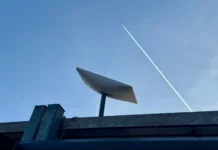The escalation of stunts on YouTube may have reached new heights after Mark Robert’s proposal to take a selfie with planet Earth using a satellite he is launching into orbit with the help of Google and T-Mobile.
Robert is a former NASA engineer who made a name for himself on YouTube by bombarding porch pirates with glitter, creating the world’s largest super tub, and building an obstacle course for squirrels. Now he’s combining his interests with the launch of a satellite that can take a portrait of anyone on a Google Pixel screen with the Earth-yes, planet Earth-in the background.
If you tell Robert where you live, he claims he will take a selfie when the satellite is over your city and tell you when the photo is taken, so you can go outside and technically be in the frame twice. The satellite is scheduled to be launched by SpaceX in January 2025 (aboard the Transporter 12 mission), and a few months after that it will start taking selfie photos.
Yes, it’s a total gimmick, and while Robert and T-Mobile are advertising this opportunity as “free,” I regret to inform you that there are strings attached. To get the free satellite selfie code, you need to subscribe to CrunchLabs, which offers kids’ construction kits to get a free satellite selfie code. (A CrunchLab subscription costs between $25 and $80 per year, depending on the package you choose). Existing T-Mobile subscribers can also get a free code through the T-Life app, and Google Pixel users are also receiving codes.
The codes can be redeemed starting December 3 at spaceselfie.com. You will be prompted to upload your selfie, after which you will receive an email that will allow you to track when your selfie is taken.
Robert has an entire YouTube video explaining the mechanics of the selfie satellite. There are actually two cameras and two Google Pixel phones mounted on either side of the satellite for redundancy, all powered by an extended solar array that transfers energy to a 120 Wh battery.
This actually poses a unique challenge for the satellite, which must be turned in at least three different directions to collect solar energy, take selfies, and send and receive photos – without propellers or motors to help change position. To solve this problem, Robert’s team installed a flywheel inside the satellite to help it change position depending on what action it is performing. It’s pretty clever.









